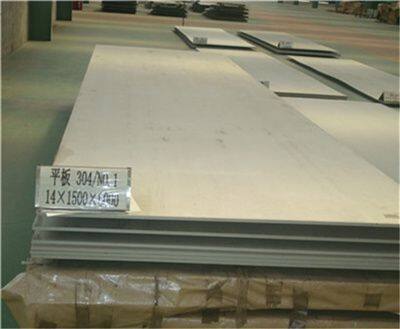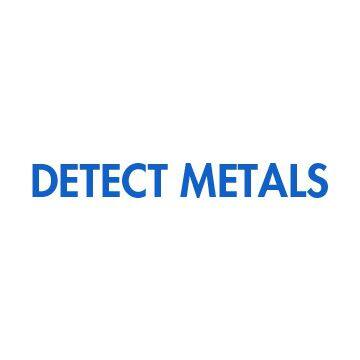Home > Company News > Features and Uses of Stainless Steel
Company News

Today Stainless Steel Plate 2205 Manufacturer introduces the characteristics and uses of stainless steel.
SUS304: Has good corrosion resistance, heat resistance, low temperature strength and mechanical properties, good hot workability such as stamping and bending, no heat treatment and hardening, and no magnetic properties. Widely used in household products (class 1 and 2 tableware), cabinets, indoor pipelines, water heaters, boilers, bathtubs, auto parts, medical appliances, building materials, chemicals, food industry, agriculture, ship parts.
SUS304L: Basic austenitic steel, so 304l Stainless Steel Plate is the most widely used; excellent corrosion resistance and heat resistance; excellent low temperature strength and mechanical properties; single-phase austenite structure, no heat treatment hardening phenomenon (non-magnetic, use Temperature -196--800°C).

304l Stainless Steel Plate
SUS304Cu: Austenitic stainless steel with 17Cr-7Ni-2Cu as the basic composition; excellent formability, especially good wire drawing and aging crack resistance;-corrosion resistance is the same as 304.
SUS316: Corrosion resistance and high temperature strength are particularly good. It can be used under severe conditions. It has good work hardening and non-magnetic properties. Suitable for seawater equipment, chemicals, dyes, papermaking, oxalic acid, fertilizer production equipment, photography, food industry, coastal facilities.
SUS316L: Mo (2-3%) is added to steel, so it has excellent corrosion resistance and high temperature strength; SUS316L has lower carbon content than SUS316, so 316l Stainless Steel Sheet has better resistance to intergranular corrosion than SUS316 stainless steel; high temperature creep high strength. Can be used in harsh conditions, good work hardening, non-magnetic. Suitable for seawater equipment, chemicals, dyes, papermaking, oxalic acid, fertilizer production equipment, photography, food industry, coastal facilities.
SUS321: Ti is added to 304 steel, so it has excellent resistance to intergranular corrosion; high temperature strength and high temperature oxidation resistance; high cost, and workability is worse than SUS304. Heat-resistant materials, automobiles, aircraft exhaust pipe lines, boiler furnace covers, pipes, chemical installations, heat exchangers.
In particular, 316 and 317 stainless steels (see below for properties of 317 stainless steels) are molybdenum-containing stainless steels. The content of molybdenum in 317 stainless steel is slightly higher than that in 316 stainless steel. Due to the molybdenum in steel, the overall performance of this steel is better than that of 310 and 304 stainless steel. Stainless steel has a wide range of uses. 316 stainless steel also has good chloride erosion properties, so it is usually used in marine environments.
The maximum carbon content of 316L stainless steel is 0.03, which can be used in applications that cannot be annealed after welding and require maximum corrosion resistance.
Corrosion resistance: The corrosion resistance is better than 304 stainless steel, and it has good corrosion resistance in the production process of pulp and paper. And 316 stainless steel is also resistant to marine and aggressive industrial atmospheres.
Heat resistance: in intermittent use below 1600 degrees and continuous use below 1700 degrees, 316 stainless steel has good oxidation resistance: in the range of 800-1575 degrees, it is best not to continuously act on 316 stainless steel, but in this When the 316 stainless steel is continuously used outside the temperature range, the stainless steel has good heat resistance. 316L stainless steel has better resistance to carbide precipitation than 316 stainless steel, and can be used in the above temperature range.
Heat treatment: annealing in the temperature range of 1850-2050 degrees, then rapid annealing, and then rapid cooling. 316 stainless steel cannot be hardened by heat treatment.
Welding: 316 stainless steel has good welding performance. All standard welding methods can be used for welding. When welding, you can use 316Cb, 316L, or 309Cb stainless steel filler rods or electrodes to weld according to the purpose. In order to obtain the best corrosion resistance, the welded section of 316 stainless steel needs post-weld annealing. If 316L stainless steel is used, post-weld annealing is not required.
-
competitive prices for stainless steel plate
-
TISCO stainless steel plate
-
stainless steel dinner plate
-
stainless steel plate
-
304 stainless steel plate in stock
-
410S stainless steel plate in stock
-
And hot rolled yoke steel B350TG179 for hydrogenerator rotor of Baosteel and WISCO.Contact mailbox:fwh15827352309@outlook.com
-
M35 / M42 / ASP23 / ASP30 / ASP60 High-Speed Steel – Premium HSS for Cutting, Milling & Precision Tools
-
M35 / M42 / ASP23 / ASP30 / ASP60 High-Speed Steel – Premium HSS for Cutting, Milling & Precision Tools
-
M35 / M42 / ASP23 / ASP30 / ASP60 High-Speed Steel – Premium HSS for Cutting, Milling & Precision Tools
-
High Speed Tool Steel – M35 / M42 / ASP23 / ASP30 / ASP60 | Excellent Wear Resistance & Toughness
-
M2 High Speed Tool Steel – Versatile HSS for Cutting & Forming Tools
-
Cr12MoV Cold Work Tool Steel – High Wear Resistance & Toughness
-
DH2F Cold Work Tool Steel – High Toughness & Wear Resistance
-
HPM50 Plastic Mold Steel – High-Performance Pre-Hardened Tool Steel
-
HPM38 Plastic Mold Steel – Pre-Hardened, High-Performance Tool Steel
-
TDAC Mold Steel – Tough, Reliable, and Ready to Perform
-
TDAC Mold Steel – High Toughness & Pre-Hardened Plastic Mold Steel
-
Premium HPM75 High-Performance Mold Steel – Excellent Wear Resistance & Machinability
-
Premium HPM75 High-Performance Mold Steel – Excellent Wear Resistance & Machinability
-
NAK55 Pre-hardened Plastic Mold Steel – Excellent Machinability & Polishing Performance
-
bimetal compound wear plate chromium hardfacing cladding welding wear plate
-
wearing chromium carbide overlay plate chromium carbide wear surface plate hardfacing liner plate
-
high chromium carbide weld plate chromium carbide welding plate bimetallic chromium carbide coated plate

